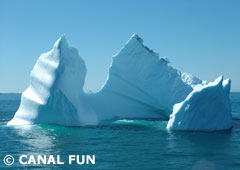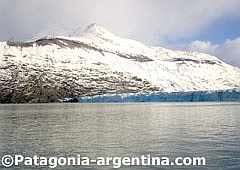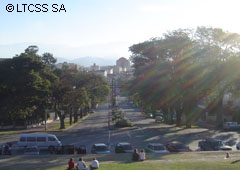The polar weather rules throughout most of the continent due to its austral location, its height above sea level and the few solar radiation it receives. The earth has no heat here, the solar rays get almost entirely reflected by…
The climate
Ushuaia's weather changes all the time, during every season, and the changes can happen from one day to another or even during the same day. Weather in Ushuaia In January, the average temperature is 10ºC, although it can raise…
A wide temperature range and the almost constant winds characterize the weather in Puerto Madryn. Weather in Puerto Madryn In summer it is hot during the day, it can reach 40 º C, but always cool at night. Winter temperatures are low but there is no snow. Note that in Puerto Madryn latitude the ozone…
Please bear in mind that our summer starts December 21st. Area North Atlantic South Atlantic Tierra del Fuego The Glaciers Northern Lakes Negro river Upper Valley and Neuquén Rio Negro Province (south) Features In this zone western winds predominate and,…
Patagonia, promises and delivers unforgettable adventures to its visitors and each destination offers unique experiences that require meticulous preparation. This article aims to be your packing companion, ensuring that you arrive in Patagonia prepared for everything this land of contrasts…
The climate in Mendoza is mild with little rain and a clear sky most of the year. This is another attraction. Weather in Mendoza The climate is temperate continental. Precipitation, in general, are scarce. Snowfall in the mountain range are eagerly awaited since it increases the flow of rivers and irrigation favor. The rainy season is the summer, with some spectacular storms,…
At El Calafate the climate is dry, with only 300 mm. rainfall in a year. But inside the Park, which is located towards the west and where Perito Moreno Glacier is, the situation changes and rainfall easily gets to 1500mm./year.…
The park is hot and humid, with temperatures of 15ºC in the winter and 26ºC in the summer. Weather in Cataratas del Iguazú There is an average of 2000 mm of rainfall per year. While the falls can be enjoyed year round, the best season to…
The main characteristics of the Patagonian climate are: short falls and springs, and long winters. Great thermal amplitude between summer and winter, as well as a substantial temperature difference between day and night. Please click here in order to access a comprehensive…
Salta has a vast variety of climates, due to its location, the great difference in height existing among the province’s extension and the tropical latitude in which it is located. Weather in Salta Within this variety, the city of Salta,…
In Cachi the weather is dry, with mild summers and cold winters, and with large temperature ranges between day and night. Weather in Cachi Summer temperatures range from 15 º C and 28 ° C. In winterrange between 1 ° C and 19 ° C.
Bariloche's climate ranges from very humid at the Andes (the region where it rains the most in Argentina ), to humid at the start of the Plateau. Rainfall increases westbound. It is a climate typical of high mountains; more rain…
Cafayate's climate is dry and mild. It enjoys over 300 days of sunshine a year! Keep in mind one thing: there is a wide range of temperatures between day and night. Weather in Cafayate


